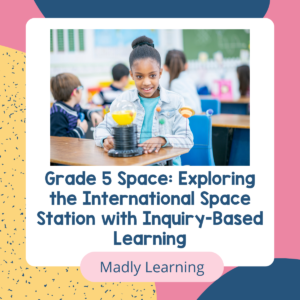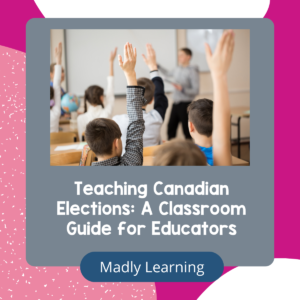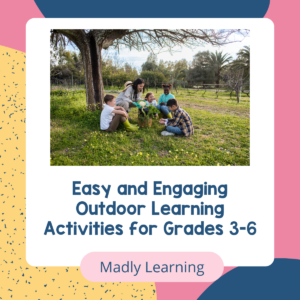 The reality is in today’s classrooms is that we all have students with special education needs. But this also means that the needs of these students fall squarely on the shoulders of the classroom teacher.
The reality is in today’s classrooms is that we all have students with special education needs. But this also means that the needs of these students fall squarely on the shoulders of the classroom teacher.
This ability for a classroom teacher to plan for those that are working at, above, or below grade level all need programming that helps them learn, grow, and fill gaps in their education.
Sometimes this is a contentious issue among teachers, parents, and administrators.
How do we meet the needs of those students who are not working at grade level while also meeting the needs of the students that are?
I have some rules for myself that I follow that help guide the decisions about how I support, plan and work with students with special education needs.
- No one is excluded from learning
- Learning difficulties do not mean ‘YOU CAN’T’, it means YOU CAN but differently
- Students working on different learning expectations are hidden in plain sight
- Every student has strengths that you can build upon
- Leverage digital whenever possible
- Students with special education needs don’t get a pass from working hard
No one is excluded from learning
This is one of my rules that is sometimes hard to achieve. I do not want to leave students out of the opportunity to learn. Putting students in a corner or on a computer because the work is ‘too hard’ for them does not happen in my classroom if I can avoid it.
Everyone engages in the learning in class and that might mean that I have to provide multiple entry points or plan for scaffolded support in class. Sometimes this means that I can
- let students take notes or pictures of the lesson
- provide them with notes prior to the lesson
- reteach concepts
- use peer tutors
- use assistive technology
Learning difficulties do not mean ‘YOU CAN’T’, it means YOU CAN but differently
For me, there are no exceptions to this rule. Every student can learn and it is important to understand how they learn so that they can be successful.
I’m trying to avoid the assumption that a student who is reading at a grade one level is also cognitively working at a grade one level. This discounts the students potential given the right supports.
I think as teachers we need to be very careful with the assumption that reading level equals cognitive ability.
“I have a student at a grade one level”
Unless there are both cognitive and learning deficits. This widely used and popular statement is false and can do harm to the student. It can limit the teacher’s beliefs that the student has more potential.
The challenge becomes in how to modify for the student that respects their learning strengths.
Some of my favourites include
- repetitive practice
- using technology
- varying the presentation
- getting to know the student’s strengths and interests
- chunking
Students working on different learning expectations are hidden in plain sight
“ok everyone I want you to complete question 1-5 in your textbook.” Then the teacher walks over to a student and hands them a textbook clearly labelled with a lower grade level and hands it to them. While every student in your class notices this.”
I don’t know about you but if I were that students I would be mortified. There might not be anything more embarrassing than having this happen to me and it certainly wouldn’t motivate me to try.
In fact, it would probably make me want to try and fail the hard work I can’t do just to fit in.
Most students just want to blend in and at this age, social pressure and conformity are a big deal to many students.
So to combat this I make differentiating for all but necessary for some a strategy. Really it is increasing choice and flexibility in my room so that those who do work differently don’t stick out.
- Choice boards for writing and reading
- Inquiry for science and social studies
- Differentiated daily math
Every student has strengths that you can build upon
Getting to know your students help to identify their strengths. Conferencing with them and telling them what you admire about their work helps the focus on their strengths.
Highlighting your strengths and weaknesses and ways you compensate is also an easy tool.
Modelling for students that we all have things that make us great and goals we need to work on makes a difference.
In the same breath, dispelling the stigma that there is something wrong with struggling with aspects of the school is also important.
Students with special education needs don’t get a pass from working hard
In fact, most special education students need to work harder. Because I truly believe they have potential Is expected that the students worked just as hard as any other student in my classroom. They may not be doing the same work But they are required to put forth the same amount of effort.
I also want them to know that as a teacher I invested a tremendous amount of time to support their learning and learning other classmates and in return, I expect that they put forth just as much effort.
Together we make goals and work hard to achieve them. We track our progress, celebrate her successes and make new goals.
Now, this does not mean that every student is successful some aren’t ready to be. For various reasons perhaps previous experience they just aren’t ready. In this case, sometimes it’s just providing them opportunities and believing in them when they don’t believe in themselves. Perhaps the belief you have in them will one they translate into the belief they haven’t themselves.
Leverage digital whenever possible
I’m a big supporter of using technology in the classroom. Primarily because I strongly feel that students with special education needs Required technology in order to be successful.
So because I like to hide my special education students in plain sight if some are using technology then all are using technology.
I have become a digital classroom in an effort to better support my special education students
Application such as
- Read Write Google
- Explain everything
- Google classroom
- Pic Collage
- Camera and video support
- YouTube tutorials and videos
- And many more






